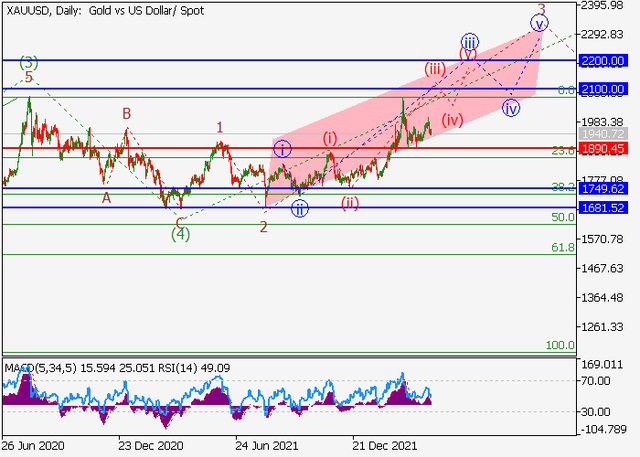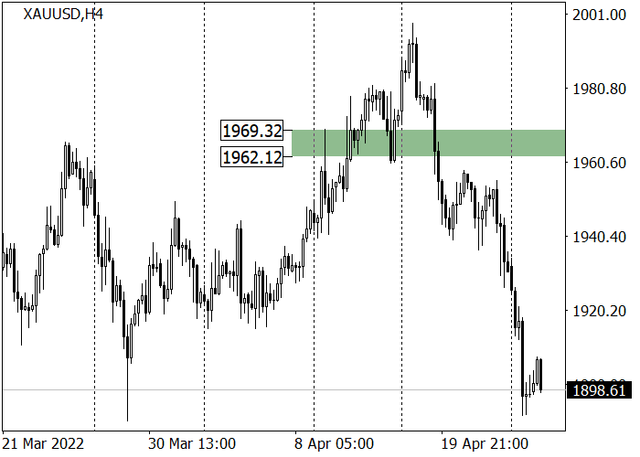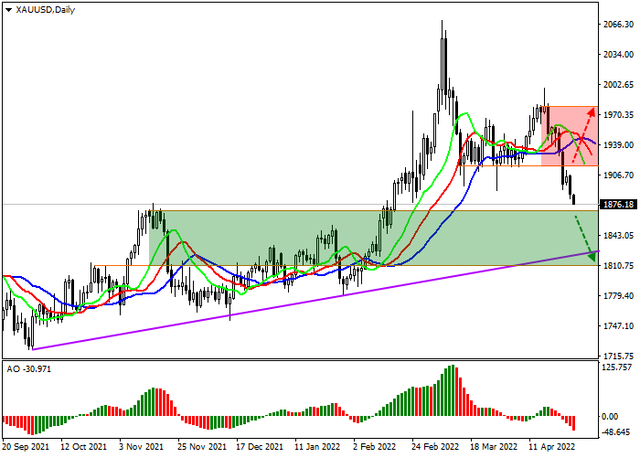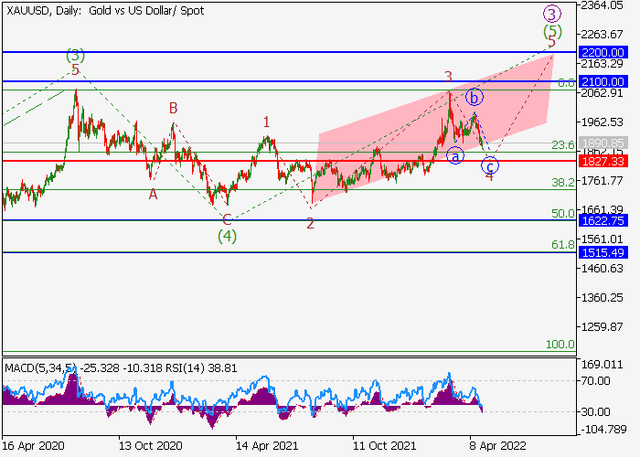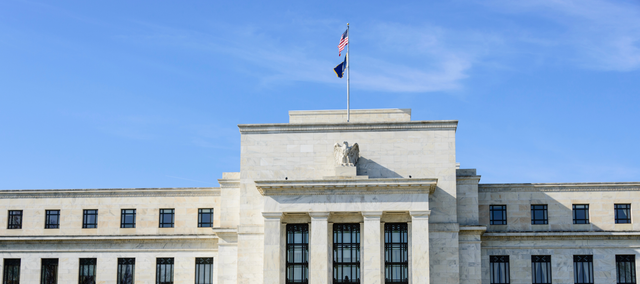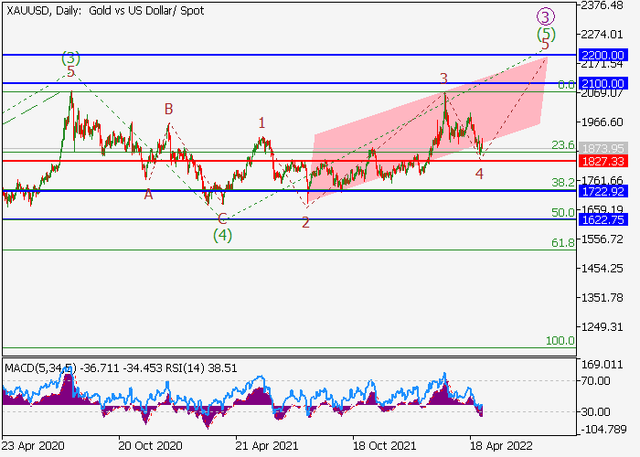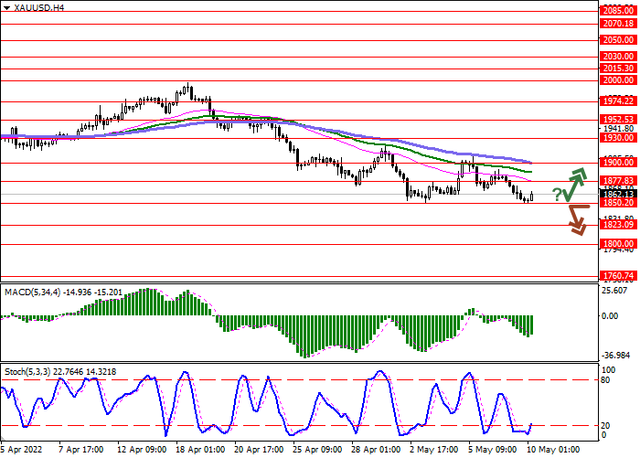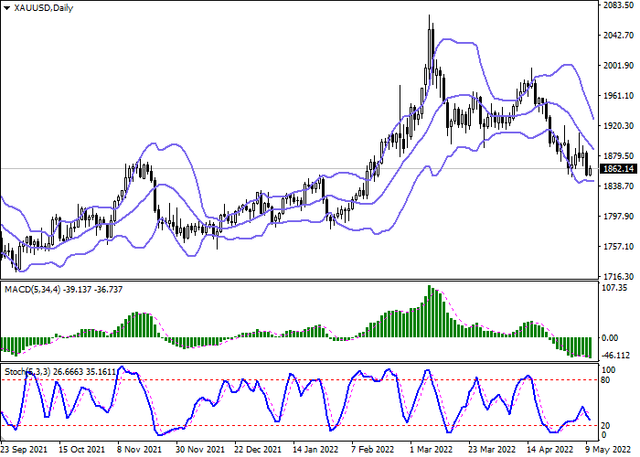SOLIDECN
Senior member
- Messages
- 3,041
- Likes
- 0
Gold, Fibonacci levels analysis
Daily overview
On the daily chart, the price continues to test 1921 (correction 50.0%), and the consolidation below it allows a decline to 1890 (correction 61.8%), 1850 (the area of January highs). However, an ascending fan may prevent negative dynamics. The key "bullish" level is 1951 (correction 38.2%), supported by the middle line of Bollinger bands. Its breakout will give the prospect of further growth to 1990 (correction 23.6%), 2050 (correction 0.0%).
Technical indicators do not give a single signal: Bollinger bands are horizontal, Stochastic reverses upwards, but the MACD histogram decreases in the negative zone.
Weekly overview
On the weekly chart, the price tested 2033 (correction 0.0%) but is now correcting downwards. A break of 1890 (38.2% ascending fan line) further declines to 1835 (23.6% correction, middle line of Bollinger Bands). Otherwise, the quotes will be able to return to 1990 (upper line of Bollinger bands), 2033.
Technical indicators do not give a single signal: Bollinger bands are directed upwards, Stochastic is directed downwards, and the MACD histogram increases in the positive zone.
Resistance levels: 1951, 1990, 2050 | Support levels: 1921, 1890, 1835
On the weekly chart, the price tested 2033 (correction 0.0%) but is now correcting downwards. A break of 1890 (38.2% ascending fan line) further declines to 1835 (23.6% correction, middle line of Bollinger Bands). Otherwise, the quotes will be able to return to 1990 (upper line of Bollinger bands), 2033.
Technical indicators do not give a single signal: Bollinger bands are directed upwards, Stochastic is directed downwards, and the MACD histogram increases in the positive zone.
Resistance levels: 1951, 1990, 2050 | Support levels: 1921, 1890, 1835
Solid ECN Securities
1:1000 Leverage | Spread from Zero | %40 Deposit Bonus | Negative Balance Protection
1:1000 Leverage | Spread from Zero | %40 Deposit Bonus | Negative Balance Protection


